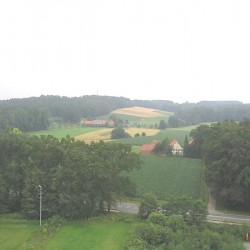Kalkriese, Museum und Park
Q1954771I recently visited two museums that illustrate Rome’s presence on the East Bank of the river Rhine: Park Kalkriese (on the site of the battle of the Teutoburg Forest) and the Westfälisches Römermuseum at Haltern. A first remark must be that the governments of Germany, Nordrhein-Westfalen, and Niedersachsen deserve the highest praise for creating, in the 1990′s, two beautiful museums.
Yet, it must be admitted that the Kalkriese museum can be a bit disappointing. There's nothing wrong with battle site itself; the problem is the museum. In our fortunate age, in which a visit to a museum is within reach of nearly everyone, any museum faces the choice between offering information to specialists and presenting objects in such a way that non-specialists can appreciate the interest of something they would otherwise have ignored. Archaeological museums are no longer repositories of dull and usually broken objects, but have changed into seducers.
The Kalkriese museum tries to explain the joy of archaeology and ancient history by presenting a puzzle and using the person of Mr. Clunn, the man with the metal detector who first discovered the site, as the visitor’s alter ego. The visitor can easily identify him- or herself with the researchers. Yet, on more than one occasion, information has been subordinated to this “experience of research”. One example will illustrate this: the coins are shown as a fascinating, intriguing treasury, very impressive indeed, but you can hardly see the design of the coins themselves.
I am not saying that this is wrong; yet, the museum can be a bit disappointing if you already know the puzzle and simply want to study the objects.
This museum was visited in 2003, 2004, 2008, 2009.







